fitness club
Why Weights Are Better Than Cardio for Fat Loss?
by admin Sep 3, 2017 149 Blog fitness club, fitness club in pimple Saudagar, fitness club in pune, S-Square Fitness Club, S-Square Fitness Club in Pimple Saudagar, S-Square Fitness Club in puneMost of the people think that cardio is an effective method for fat loss. However, people accidentally believes in this method & it is wrong. The reason behind this is Basal Metabolic Rate (BMR), fat loss will be effective if there is an increase in BMR.
But what is BMR?
The rate at which your body uses energy when you are resting in order to keep vital functions going on such as breathing, metabolism, etc. When a person is doing a cardio activity, there is a temporary increase in metabolic rate and therefore it does not affect the BMR. On the contrary, hypertrophy increases the lean tissue content in the body; if provided with proper diet and adequate relaxation or rest. Due to hypertrophy, there is an increase in BMR. Muscle is a metabolically active tissue, so for fat loss weight training is more beneficial.
More Information :
Fat Burning, Strength Training, Power Yoga, Cardio
Benefits of Cardio
by admin May 29, 2017 108 Blog fitness club, fitness club in pimple Saudagar, S-Square Fitness Club, S-Square Fitness Club in Pimple Saudagar, S-Square Fitness Club in puneThe first one is an improved condition of your heart. Your heart is a muscle like any other and in order for it to become strong, it must be worked.
If you fail to work it, it will weaken over time and this will cause a variety of negative health effects.
By getting the heart pumping at a faster rate on regular basis you will keep it in shape and healthy. Gym in Pune Improved Heart Health.
Too many people getting winded just performing simple exercises such as -walking up the stairs and the primary reason for this is because they are neglecting to work their heart muscle.
Increased Metabolism
Another reason to perform cardio is for its effects on metabolism. Along with speeding up your heart rate, cardiovascular exercise also increases the rate of various other processes in the body, also known as your metabolism.
Generally speaking, the more intense the cardio session, the more noticeable the increase you will see with regards to metabolic rate.
Intense interval sprints(also known as HIIT) increase metabolism, the highest with a process called EPOC(Excess Post-exercise Oxygen Consumption). Gym in Pune Increased Metabolism.
Increased metabolism means an easier time maintaining your weight(or losing weight as the case may be)
Improved Hormonal Profile
Performing cardiovascular exercise also changes the hormonal profile in your body considerably.
It releases “feel good” hormones that will help ease symptoms of depression ab fatigue ass as well as releasing hormones that decrease the appetite.
Individuals who partake in regular cardio exercise often have a much more positive outlook on life simply because they are getting the stress-relief benefits from these hormones.
Improved Recovery Ability
Certain types of cardio exercises, usually lower, more moderately paced forms, can decrease your recovery time too.
If you have just performed a hard session in the gym, hopping on the treadmill for a walk or light jog will help to remove some of the by-products that were created during the lifting session.
This will help to reduce your DOMS (Delayed Onset of Muscle Soreness) and help bring more oxygen-rich blood to the muscle tissue improving in the repair and rebuilding process.
To you, this translates to your being able to get back into the gym quicker and work the muscles again. Gym in Pune Improved Recovery Ability.
Building muscles is a combination of an overloading stimulus and sufficient rest to allow the muscles to heal itself.
If you skew this balance either direction, either working out too much rest in between, you aren’t going to get optimal results.
The more frequently you are able to work a muscle through (assuming full recovery has been achieved) the faster you will add additional new muscle. Cardio helps you do this.
Just don’t take this too far as excess cardio or cardio done at such a high intensity that it places additional strain on the muscles is going to actually hinder recovery rather than aid it.
Management of Diabetes
Lastly, for those who have diabetes, cardiovascular exercise helps them manage this condition, by performing the exercise you will increase your muscle’s ability to utilize glucose.
Those who exercise regularly tend to have better control of their blood sugars and do not see as many blood sugar swings as those who don’t.
For diabetes, this is increasingly important as they are extremely sensitive to changes in blood sugar levels. Cardio Management of Diabetes
Power Yoga, Cardio, Strength Training
Power Yoga
Fat Burning
Weight Training Vs Cardio Vascular Training
by admin May 29, 2017 87 Blog fitness club, fitness club in pimple Saudagar, S-Square Fitness Club, S-Square Fitness Club in Pimple Saudagar, S-Square Fitness Club in puneEPOC or the after burn effect
Intense weight training causes micro trauma to the skeletal muscles. It also throw the body out of equilibrium or homeostasis. This results in increased blood pressure, body temperature, heart rate, respiratory rate. etc. Post exercise and during recovery, the body not only has to repair the muscles tissue but also bring these parameters back to normal or to the state of homeostasis. This forces the body to burn more calories at rest and increases the BMR. The body also consumes excess oxygen to carry out this recovery. This effect is known as EPOC (Excess Post exercise Oxygen Consumption) or the after burn effect.
EPOC or after burn depends on two factors: intensity and surface area of damage. This means that a 4 rep max workout will offer greater EPOC as compared to a 15 rep max workout of the same exercise. Similarly compound multi joint movements would offer greater EPOC as compared to isolation movements for the same exercise and intensity as the surface area of damage is more.
If proper nutrition and rest is provided during the recovery phase, the body tries to super compensate by making the muscle stronger and bigger. This increase in the size of the muscle cell is know as hypertrophy. Since muscle is metabolically active tissue. Increased muscle mass would force the body to burn more calories in order to maintain the increased amount of muscle. Thus, there would be an increase in BMR.
Compared to weight training, cardio vascular training does not induce hypertrophy. The EPOC effect associated with cardio training is also comparatively lower. Therefor weight training is a better tool to active fat loss.
Can You Eat Too Much Protein After a Workout?
by admin Mar 15, 2017 165 Blog fitness club, fitness club in pimple Saudagar, S-Square Fitness Club, S-Square Fitness Club in Pimple Saudagar, S-Square Fitness Club in puneCan You Eat Too Much Protein After a Workout?
I used to think that the more protein I ate after a workout, the better it was. I remember sucking down 3-4 cans of liquid protein shake after my daily exercise routine.
But new research suggests that not only does excess post-workout protein not really do you any extra good, it might actually be bad for you.
researchers looked at the effects of ingesting 0, 10, 20, or 40 grams of whey protein isolate immediately after a weight training workout.
It was found that when it comes to muscle building and muscle recovery, 20g of protein post-workout seems to be the sweet spot.
And 40g simply results in increased ammonia production due to higher protein breakdown rates – and all this extra ammonia has to be cleaned up and filtered by your kidneys.
Putting undue stress on these precious organs. Approximately 20g of protein can be had from a couple of large eggs, or a 6-8oz portion of beef, chicken or fish, or a couple of scoops of whey protein.
A handful of seeds and nuts combined with a bowl of an amino acid-rich grain such as quinoa. So don’t overdo it! More isn’t always better.
How to Get Rid of Muscle Soreness Fast
by admin Mar 15, 2017 121 Blog fitness club, fitness club in pimple Saudagar, S-Square Fitness Club, S-Square Fitness Club in Pimple Saudagar, S-Square Fitness Club in puneSo what does a fitness guru do to bounce back as fast as possible from soreness (especially when he wants to enjoy a few good days on the Hawaiian beaches)? Here are the most effective methods I’ve been using lately (and here’s how to know whether you should actually feel sore after your workout):
- Hot-Cold Contrast Showers: These increase blood flow and help to shuttle inflammation out of the muscle. Just take a 5-minute shower, and alternate between 20 seconds cold and 10 seconds hot. See also How to Use Cold Weather to Lose Weight.
- Curcumin: In high doses, this tasty ancient Indian spice is actually a potent anti-inflammatory. I take over a gram a day for several days after a really hard workout. I use a capsule, since using that much curry on food would be a bit much! And I definitely avoid ibuprofen – here’s why.
- Massage: Since it can be time-consuming and expensive, I rarely go out of my way to hunt down a long sports massage. But after a very hard workout or race, I make an exception. Just one good massage can make an enormous difference and is far more effective than an foam roller if you really, truly beat up – (since a foam roller takes quite a bit of energy to use properly).
The 5 Best Full Body Exercises
by admin Mar 15, 2017 131 Blog fitness club, fitness club in pimple Saudagar, Full Body Exercises, S-Square Fitness Club, S-Square Fitness Club in Pimple Saudagar, S-Square Fitness Club in puneIn the episodes How To Lose Fat Quickly and How To Build Muscle, we learn that there is one distinct similarity between both fat-burning and muscle-building goals: They each require the use of full body, multiple-joint exercises that activate many muscles at the same time.
When it comes to full body exercises, some are more effective than others, so in this article, you’ll learn the 5 full body exercises that get you the most results in the shortest period of time. (Each exercise below links to a video demonstration of the movement.).
The 5 Best Full Body Exercises
Full Body Exercise #1: Turkish Get-Up
I may be a fitness buff, but my history and geography skills aren’t quite up-to-par, so I’m not quite sure how or why this exercise is “Turkish.” But the “Get-Up” part is easy to understand once you’ve tried this move.
To complete a Turkish Get-Up, you lie on your side, with a dumbbell in one hand. The dumbbell should be held out at arm’s length. From this position, you simply stand, while keeping the dumbbell overhead at an arm’s length. This means you only have one arm and two legs to help you both stand and push the weight of that dumbbell up as you stand.
This exercise can be difficult to learn, but if you can do 3-4 sets of 5-10 Turkish Get-Ups per side, then you are probably in pretty good shape!
Full Body Exercise #2: Swing Squats
For this exercise, hold a dumbbell or an kettlebell down by your feet with one outstretched arm, then drop into a squat position with your butt pushed behind you, your back straight, and your heels firmly planted. Now, stand about halfway up as you begin to swing the dumbbell up, quickly reverse direction and drop down into a full squat position again, then powerfully stand as you swing the dumbbell overhead.
If you do this exercise as explosively as possible, which I highly recommend, you will find that your heart rate will get very high with just a few repetitions, making the swing squat both a cardiovascular and strength building exercise.
Full Body Exercise #3: Medicine Ball Slams
This is a great stress-relieving exercise, and also helps to build power and athleticism in the upper body, core, and legs. It is also a very easy full-body exercise to learn.
To do a medicine ball slam, you simply get a medicine ball (those big heavy balls you can often find in the corner of the gym), raise it overhead, then swing your arms down as you release the ball and slam it into the ground as hard as possible.
As you can imagine, this can be a loud exercise, so you may want to find a private area of the gym (like an empty group exercise room) and you will also need to be careful not to let the ball bounce back up and hit you in the face!
For an extra challenge, I sometimes finish a workout to complete exhaustion with 50-100 medicine ball slams.
Full Body Exercise #4: Burpees (also known as Squat-Thrust Jumps)
As an infamous exercise used by fitness boot camp instructors, the burpee is one of those movements that you can love to hate. It will give you a full body workout in a matter of mere minutes, but also requires a great deal of focus and intensity.
Here’s how to do a burpee: from a standing position, squat down, put your hands on the ground, kick your legs out behind you, do a push-up (optional), then kick the legs back up into a squat position, stand and jump as you swing your arms overhead. If you’re an advanced exerciser or want to add even more “oomph” to this exercise, you can wear a weighted vest as you do your burpees.
Most burpee workouts involve doing a series of 10, 15, or 20 burpees as part of a full body weight training or body weight circuit, but you can do just 1-2 minutes of burpees in the morning as a fantastic metabolic booster to jumpstart your day!
Full Body Exercise #5: Deadlift-to-Overhead Press
The premise of the deadlift-to-overhead press is fairly simple: you pick a heavy object off the ground and lift it overhead. The object can be a dumbbell, barbell, kettlebell, medicine ball, sandbag, or, if you’re working out with a partner, even another person!
When you pick the object off the ground, which is called a deadlift, you’ll need to have good form: looking forward with your knees bent, butt out, and back straight.
You then stand, and as you stand or after you are in a standing position, hoist the weight overhead – using your hip and leg muscles to assist your upper body with driving the weight up.
A Full Body Exercises Workout
Want a fast and effective workout that gets you fit fast and burns lots of calories in a short period of time? Those last two exercises (the Burpees and the Deadlift-to-Overhead Press) are the key exercises for a tough but highly effective workout called The Burner.

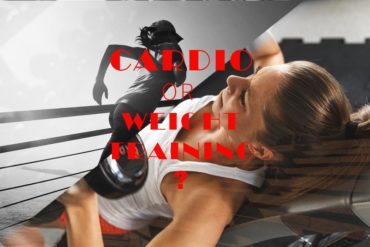
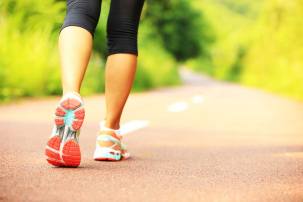
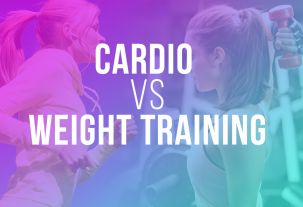
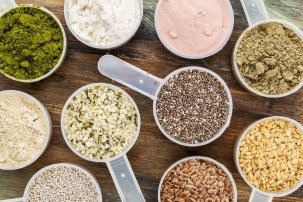
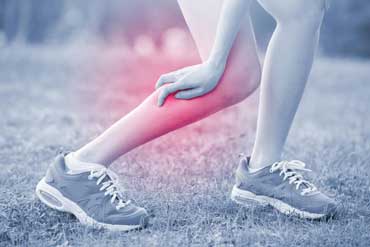
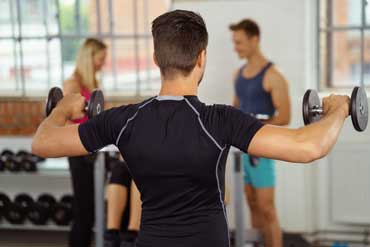
 WhatsApp us
WhatsApp us